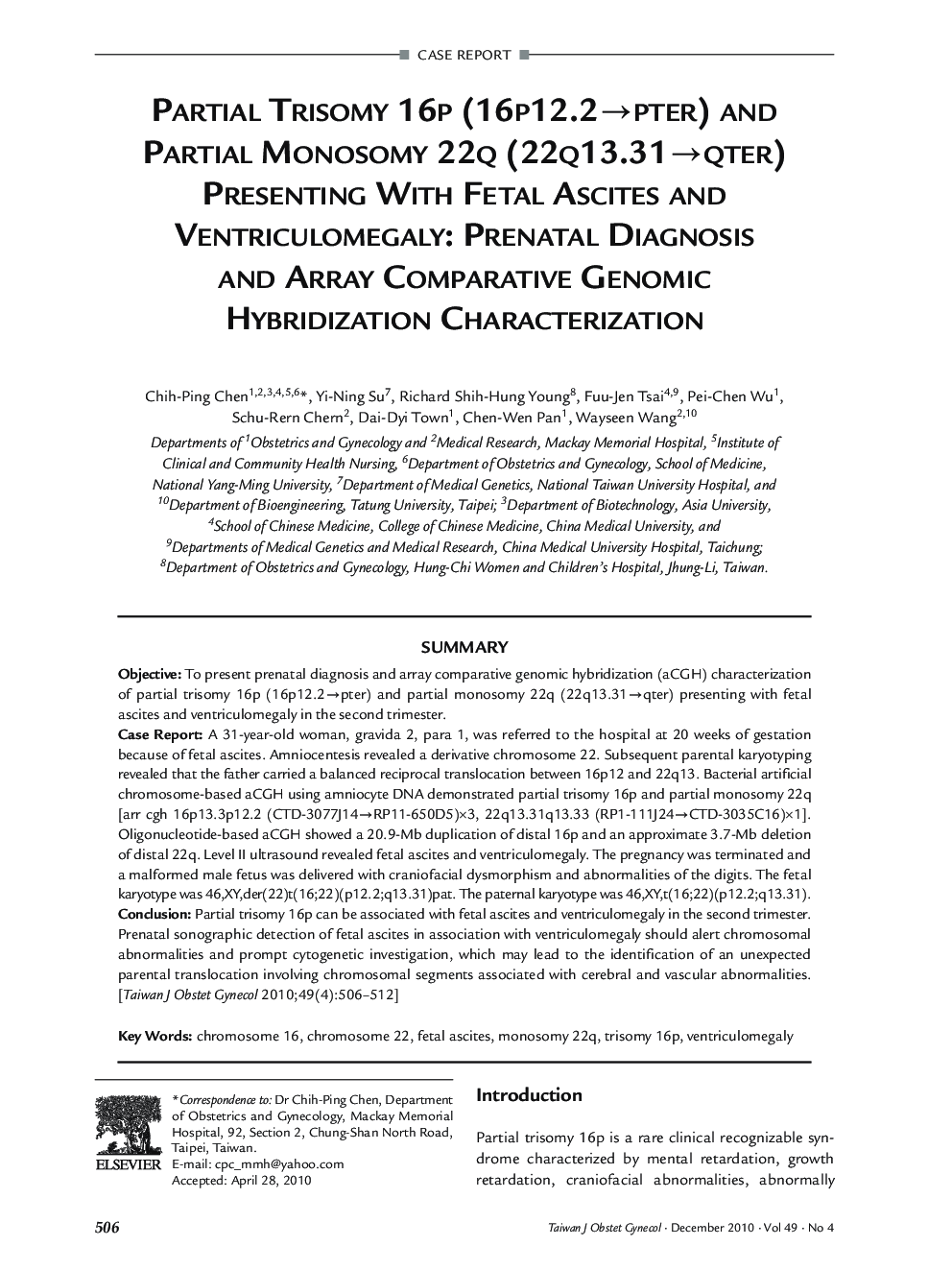| Article ID | Journal | Published Year | Pages | File Type |
|---|---|---|---|---|
| 3975884 | Taiwanese Journal of Obstetrics and Gynecology | 2010 | 7 Pages |
SummaryObjectiveTo present prenatal diagnosis and array comparative genomic hybridization (aCGH) characterization of partial trisomy 16p (16p12.2→pter) and partial monosomy 22q (22q13.31→qter) presenting with fetal ascites and ventriculomegaly in the second trimester.Case ReportA 31-year-old woman, gravida 2, para 1, was referred to the hospital at 20 weeks of gestation because of fetal ascites. Amniocentesis revealed a derivative chromosome 22. Subsequent parental karyotyping revealed that the father carried a balanced reciprocal translocation between 16p12 and 22q13. Bacterial artificial chromosome-based aCGH using amniocyte DNA demonstrated partial trisomy 16p and partial monosomy 22q [arr cgh 16p13.3p12.2 (CTD-3077J14→RP11-650D5)x3, 22q13.31q13.33 (RP1-111J24→CTD-3035C16)x1]. Oligonucleotide-based aCGH showed a 20.9-Mb duplication of distal 16p and an approximate 3.7-Mb deletion of distal 22q. Level II ultrasound revealed fetal ascites and ventriculomegaly. The pregnancy was terminated and a malformed male fetus was delivered with craniofacial dysmorphism and abnormalities of the digits. The fetal karyotype was 46,XY,der(22)t(16;22)(p12.2;q13.31)pat. The paternal karyotype was 46,XY,t(16;22)(p12.2;q13.31).ConclusionPartial trisomy 16p can be associated with fetal ascites and ventriculomegaly in the second trimester. Prenatal sonographic detection of fetal ascites in association with ventriculomegaly should alert chromosomal abnormalities and prompt cytogenetic investigation, which may lead to the identification of an unexpected parental translocation involving chromosomal segments associated with cerebral and vascular abnormalities.
